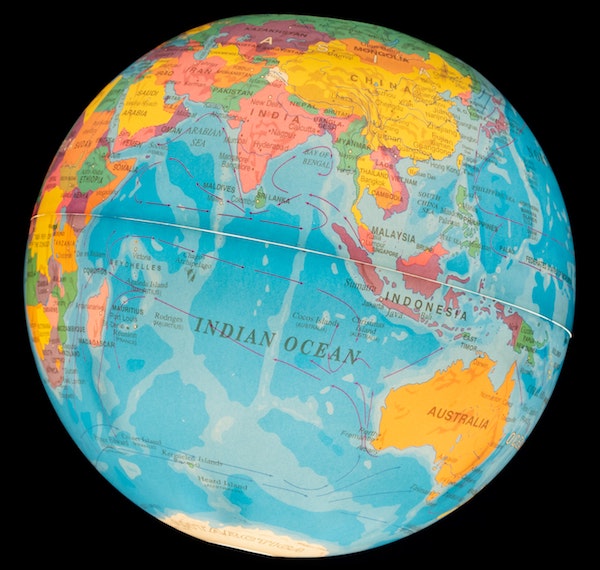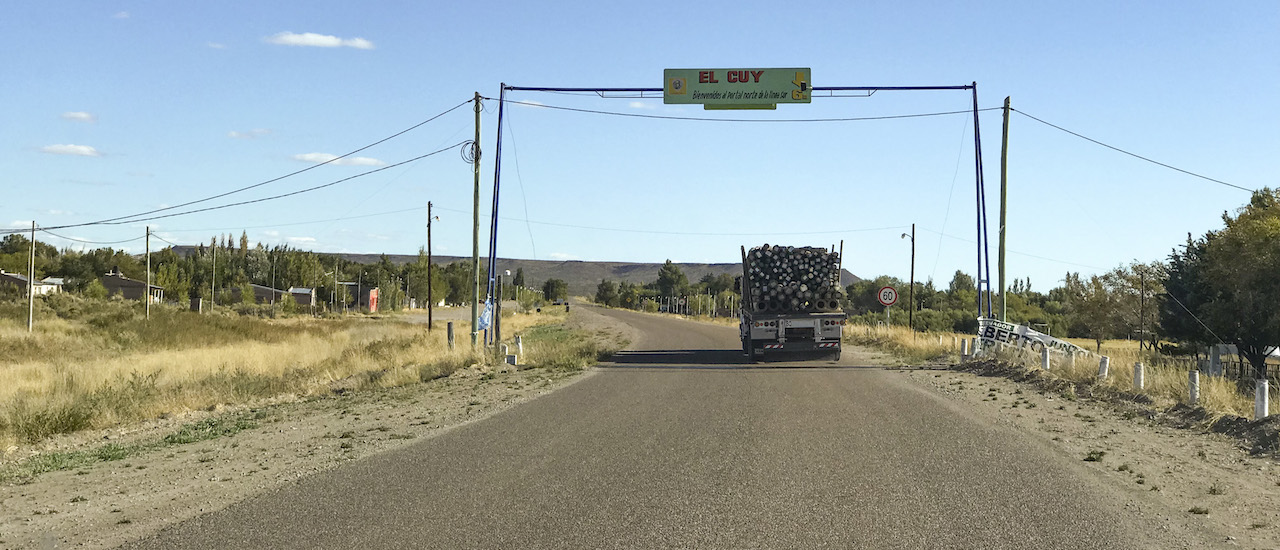Community networks connect people, helping to close the global digital divide one community at a time. At the Internet Society, we believe so much in this vision, we made ambitious goals for 2020.
We set out to support new networks, give people the training they need to deploy and manage them, bring people together to build a stronger community, and create and promote policies that support community networks (CNs), enabling more people to start or improve existing networks.
COVID-19 made this work especially pressing. Almost overnight, the Internet had become a lifeline to many, helping them to stay connected to friends and family, work and study from home, and access vital information and public services.
As the world saw the digital divide clearer than it ever has, the pandemic made working with communities harder. We had to adapt, change plans, and look for creative solutions to help people access the opportunities the Internet provides. It was one of the most challenging years in recent history, but through long-standing and new partnerships we were able to achieve our goals. Thank you to all our partners who made it possible!
Together, we trained over 300 people in skills for creating, operating, and managing community networks. These trainees can now expand access to their towns and villages. We also directly supported over 17 new and existing CNs with communities and partners all over the world, from Latanya in Uganda to Baltimore in the United States.

With new connectivity challenges, we also had the chance to discuss the possibilities of community networks with people from all regions, learning their challenges and working together so we can help them promote better policies that support the development of their own networks.
See what we did around the world – then learn more about community networks and how you can help connect everyone!
Asia-Pacific
We were looking forward to an exciting start to the year, with plans to deploy our first community network in collaboration with the government of Papua New Guinea as well as a network in the foothills of Mount Everest in Nepal. COVID-19 forced us to change our plans and rethink other activities in the region.
We invited our community to share their challenges and roles during COVID-19 to demonstrate the importance of connecting the unconnected. In the latter half of the year, we planned and started new community network deployments in India and Pakistan, and in December we were able to restart our planned deployment in Papua New Guinea. We look forward to seeing the results of this partnership with the government in the coming months.
We concluded the year by organizing our flagship Community Network Exchange Asia-Pacific (CNXAPAC) summit virtually with our oldest CN partner, the Digital Empowerment Foundation (DEF). The CNXAPAC had 10 thematic sessions over five days which were designed to mainstream the issue of CNs. The event, which hosted more than 2000 participants, culminated in a high-profile roundtable on the sixth day.
Our partners made this possible. We would like to thank everyone that has worked with us, especially the people at the Alliance for Affordable Internet (A4AI), Association for Progressive Communications (APC), Digital Empowerment Foundation (DEF), and the Government of Papua New Guinea.
Africa
Since 2016, CN operators have gathered each year to share experiences and to learn from each other at the Summit on Community Networks in Africa. In 2020 the summit was held virtually. During three sessions, more than 280 people attended with over 300 watching via streaming platforms. The remaining sessions will take place in January and February.
While discussions focused on how to navigate new challenges faced with the impact of COVID-19, the Summit sessions also showed how to start and operate a network, shared experiences on engaging community stakeholders, and showcased ideas to leverage alternative public funding sources such as Universal Service Access Funds (USAFs). The summit showed there is a need for spaces for CN operators, champions, and supporters to learn from each other and collaborate for the growth of community networks in Africa. It also showed it’s critical to create an enabling policy and regulatory environment to catalyze their growth.
In September, the Director General of Ethiopia’s Communications Authority (ECA) confirmed the ECA will authorize community networks. The inclusion of language that enables community networks was due to the effort of local and international partners, the local Internet Society chapter, and community contributors.
Communities are active in Africa, and in November BOSCO-Uganda completed the construction of a tower in Latanya, Uganda for expanding access in the region and providing the opportunities of the Internet to their people. Watch how they did it.
Facing the connectivity gap, we joined with colleagues from the African Union (AU), the African Telecommunication Union (ATU), Mozilla, the Association for Progressive Communications (APC), the Network Startup Resource Center (NSRC), and a range of governments and experts to conduct a series of webinars that discussed community networks and access issues. Topics included licensing, Universal Service and other innovative funding, and spectrum issues. These webinars brought people together, forging stronger alliances and partnerships for future work in bridging local digital divides.
We would like to give a huge thank you to all our partners who made the work in the region possible, especially colleagues from the APC, the AU, the ATU, BOSCO-Uganda, Mozilla, NSRC, and many others working to connect more people to opportunities in Africa.
Europe
When COVID-19 hit Europe, our plans in the region changed. In the midst of the pandemic, we were able to fund projects in Greece and Georgia that were already underway, but needed to increase their reach and improve service. As we saw in so many countries around the world, an Internet connection meant the ability to stay safe and work from home. In Greece, community networks provided a way for people to move out of the cities and continue working remotely. In Georgia, our partnership helped the Internet reach all of the valleys, villages, and gorges that the project had set as expansion goals. Now, the project team in Georgia wants to include more users and to work to make their CNs self-sustainable.
Our plan to start a new community network in Armenia had to be postponed because of the pandemic and other regional challenges, pushing our plans in the country to 2021. Meanwhile, a new opportunity in Valli di Lanzo in Northern Italy presented itself, and a new partnership with an Italian Internet Exchange will help to establish a new community network. Working with the local community and relying on their experience, we are certain they will have a sustainable connection soon.
Our partners on the ground were essential in making all of this work possible. We would like to thank Sarantaporo, Mountain Community Networks, TOPIX, and others working hard to build community networks in Europe.
Latin America and the Caribbean
2020 marks the successful conclusion of a two-year partnership between the Internet Society and the Organization of American States. The goal of the partnership was to promote and enable the development of community networks in rural and remote areas of the Americas. The results exceeded our goals.
Hundreds of people, including policymakers from the region, received training. The course “Building Wireless Community Networks” was completed by 295 people, and the high-level webinar “Innovative Models to Connect the Unconnected” included 174 representatives from the Inter-American Telecommunications Commission (CITEL) from more than 20 countries.
During the partnership we saw that the policy environment was favorable to the expansion of community networks in the region. We mapped enabling policies in nine countries of the Americas (Argentina, Brazil, Canada, Colombia, Ecuador, Honduras, Mexico, Trinidad & Tobago, and the United States). These results will be published in a final report in 2021. We look forward to continuing work with CITEL to support CNs.
Community networks also helped people stay connected, accessing public services during the COVID-19 pandemic. Less than a few years ago, the town of El Cuy, Argentina, was digitally isolated from the rest of the country before we helped them set up a community network. This year, by improving their network, they were prepared for the pandemic. The improved connectivity helped young people study from home, the elderly to have safer access to health services, and enabled everyone to stay isolated from people diagnosed with COVID-19 in nearby towns. In Colombia, a community network in the municipality of Buenos Aires, Cauca, saw an increase in access starting in April, after the government established social isolation measures. Their network, RedINC, helped people stay in touch with family and friends – and to safely access groceries and financial services.
The year also set the stage for promising new partnerships. We started work with a team trying to bring more connectivity to the Galapagos, including ensuring schools are wired. We expanded our activities in the Caribbean with new partners and our chapters in Haiti and Trinidad & Tobago. As 2020 began to wind down, we began discussions and plans for site visits with partners in Guyana, Jamaica, Dominica, Belize, and Trinidad & Tobago.
It’s impossible to do this work alone. All of this work was made possible thanks to Internet Society chapters, partners, and organizations participating actively in the region to enable community networks. We would like to thank CANTO, the Dynamic Spectrum Alliance, the Association for Progressive Communications, Article19, Colnodo, Redes Comunica, Rhizomatica, Altermundi, Instituto NUPEF, among many others, for their work in bridging the digital divide.
Middle-East and North Africa
The Lebanese crisis along with COVID-19 forced us to adapt and change our planned activities in the Middle East and North Africa, giving us the chance to deepen the discussion on community networks. We held a regional workshop, where we shared experiences from different countries about how community networks can create a positive impact for rural areas and discussed possible changes in regulations that would allow stakeholders to work together to bring complementary connectivity solutions to everyone.
Another positive development has been opening a dialogue with the Saudi Arabian government on a number of policy issues related to community networks. Through our exchange with them across the year, we were able to see a new era of cooperation to connect more people – alongside the work in the G20 Summit that was held virtually by Saudi Arabia.
North America
At the successful conclusion of our work with CITEL, we made plans to do more training and policy work together in 2021. Another promising partnership began as we signed an agreement with Philanthropy Northwest, an association of philanthropic organizations, to collaborate on the development of Indigenous Community Networks in the northwest region of the United States. Meanwhile, young people in Baltimore, Maryland were able to continue their education during lockdown thanks to the creation of a new mesh network supported by the Internet Society.
More Indigenous communities are now ready to advocate for better policies thanks to the 2020 Indigenous Connectivity Summit, which went virtual this year. The summit included courses on Community Networks and Policy & Advocacy, which 80 people completed. The graduates developed a set of policy recommendations that, if enacted, would make it easier for Indigenous communities to get connected on their own terms.
Our team showed the world that community networks are a solution to connect everyone, delivering multiple presentations with our partners, including the Pacific Telecommunications Council conference, Canadian Internet Governance Forum, and the IGF-USA. The successful story of a network deployed in Pu’uhonua o Waimanolo, Hawaii in 2019 will be released as a case study early in 2021, helping more people understand how communities are building their own networks.
Finally, we worked with our Tribal partners on the FCC’s Tribal Priority Window (TPW) for Educational Broadband Service (EBS), an opportunity for eligible tribes to apply for spectrum at no cost. Through outreach, including developing resources and holding information sessions, we helped many tribes to apply. With partners from AMERIND Risk Management Corporation and the SCTCA, we were able to reach 193 tribes, representing over 1.2 million people. This was the first opportunity of this kind for tribes to apply for spectrum that would allow them to use their airwaves and connect their communities.
Global Activities
Throughout the year we worked closely with the International Telecommunication Union’s (ITU) Development Sector (ITU-D) and saw the inclusion of community networks in the on-going ITU-D Study Group work where Brazil mentioned new changes to regulatory policy to allow for CNs, and in a Last-mile Access Report. Community networks also made their debut in the Working Group on 21st Century Financing Models of the Broadband Commission for Sustainable Development and in the UN Secretary-General’s High-level Panel on Digital Cooperation – Roundtable 1A on Global Connectivity, as a complementary access solution. They were also included in the COVID Policy and Regulatory Recommendations would be important in highlighting the role that community networks can play going forward. If we have learned anything, it is that partners are essential to building a bigger Internet and in building the communities that support connectivity.
We look forward to more work with our partners in 2021!
Looking Ahead
The year 2020 was filled with challenges and accomplishments, but there’s still a lot to be done. Learn more about Community Networks, and read our Action Plan 2021 to ensure the Internet is there for everyone.
Image from the Argentina Flagship Community Network in El Cuy ©Christian O’Flaherty/Internet Society

